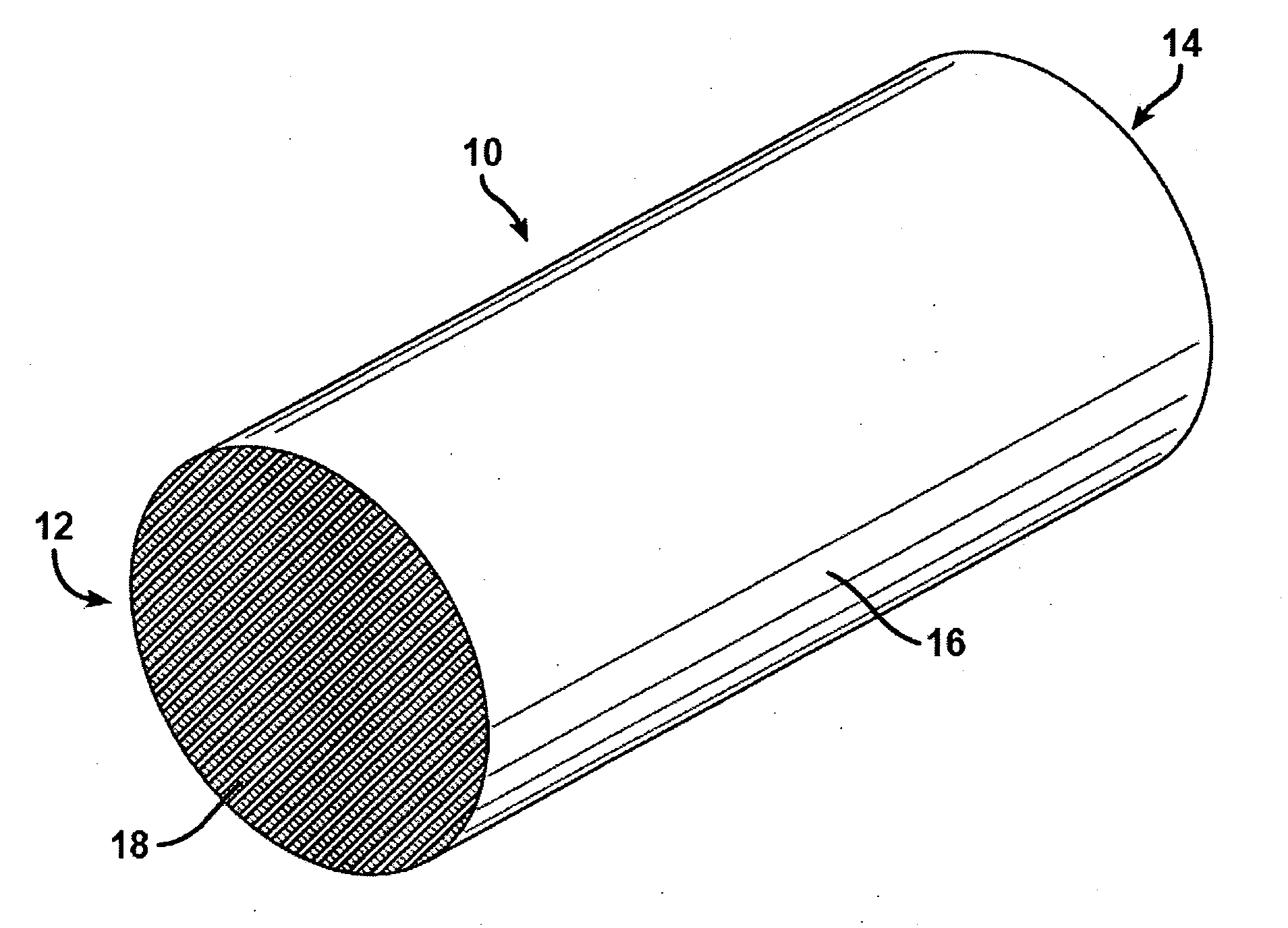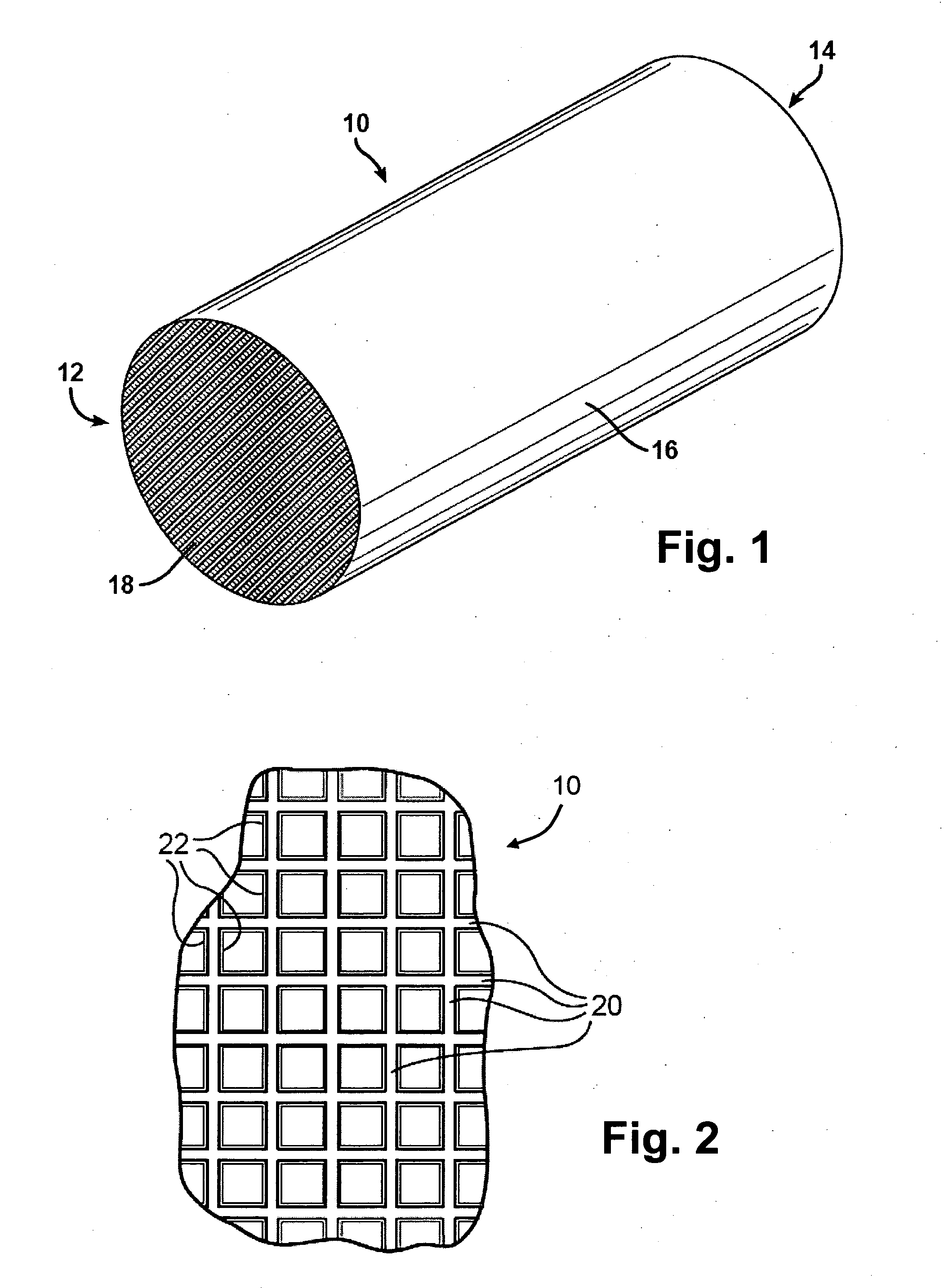In-situ temperature detection in high temperature ceramic structures
a ceramic structure and in-situ temperature detection technology, applied in catalyst activation/preparation, machine/engine, surface coverings, etc., can solve the problems that the extensive bench testing instrumentation used to determine peak filter temperature and temperature gradient cannot be practically employed to measure or control the regeneration cycle of operating motor vehicles, and achieves low monitoring cost, cost-effective, and easy installation and maintenance.
- Summary
- Abstract
- Description
- Claims
- Application Information
AI Technical Summary
Benefits of technology
Problems solved by technology
Method used
Image
Examples
Embodiment Construction
[0019]A high temperature ceramic structure in the form of a porous ceramic honeycomb 10 provided according to the present invention is schematically illustrated in FIG. 1 of the drawings. Honeycomb structure 10 is composed of a body 16 having an inlet end 12, an outlet end 14, and a plurality of channels 18 extending in parallel between the inlet end 12 and the outlet end 14 of the body. For use as a diesel particulate filter, body 16 would further comprise an alternating pattern of plugs (not shown) disposed within alternate channels 18 on inlet end 12 and outlet end 14 of body 16, arranged in known fashion so that exhaust gases are forced through the porous walls 20 of the channels 18 in traversing the body from its inlet to its outlet.
[0020]Honeycomb structure 10 may be formed of any channel density; for example channel densities in the range of 100-400 channels per square inch of honeycomb cross-section are suitable for the construction of diesel engine exhaust filters, while de...
PUM
| Property | Measurement | Unit |
|---|---|---|
| temperature | aaaaa | aaaaa |
| temperatures | aaaaa | aaaaa |
| temperatures | aaaaa | aaaaa |
Abstract
Description
Claims
Application Information
 Login to View More
Login to View More - Generate Ideas
- Intellectual Property
- Life Sciences
- Materials
- Tech Scout
- Unparalleled Data Quality
- Higher Quality Content
- 60% Fewer Hallucinations
Browse by: Latest US Patents, China's latest patents, Technical Efficacy Thesaurus, Application Domain, Technology Topic, Popular Technical Reports.
© 2025 PatSnap. All rights reserved.Legal|Privacy policy|Modern Slavery Act Transparency Statement|Sitemap|About US| Contact US: help@patsnap.com


